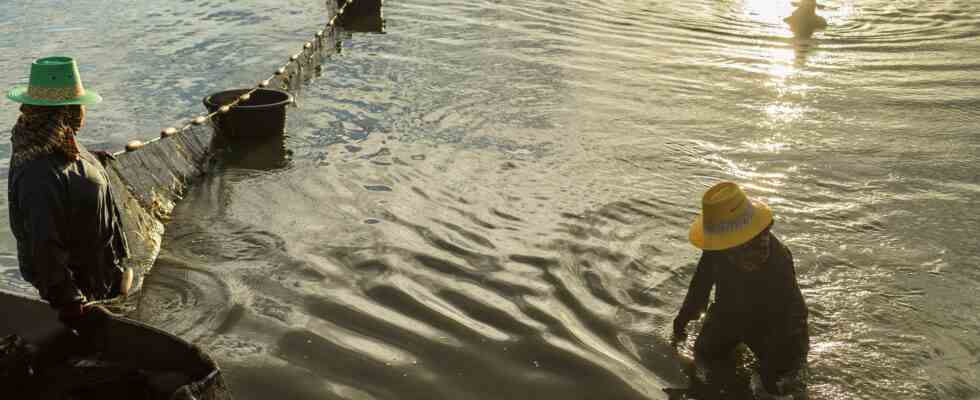Status: 08/21/2022 3:31 p.m
In Thailand, a third of the population is currently not always full. New methods in the fishing industry and aquaculture are now intended to increase yields – so that food becomes more affordable.
Mackerel are back in fisherman Theerapong Thammasara’s fishing area. “Maybe,” he says, “it’s because of all the new regulations they’ve introduced.” For a while now, big fishing boats haven’t been allowed to come closer than three miles to the coast, he says. And there are also new regulations regarding anchovies.
In any case, fisherman Theerapong is happy that the mackerel are back. In recent years, its yields have steadily decreased. Like many other simple fishermen, Theerapong sometimes hardly knew how to support his family.
High inflation as a problem
More than 23 million people, a third of the total population, are currently food insecure in Thailand. This emerges from the latest United Nations report on global food security. Food insecurity does not mean that those affected are already suffering from malnutrition and its consequences. But it is said that their access to sufficient food is not guaranteed. This does not even have to be due to the fact that there is no or too little food. It is often enough when the food available becomes so expensive that not everyone can afford it.
To ensure that food insecurity does not turn into hunger at some point, Thailand is now receiving support from the Food and Agriculture Organization (FAO). As part of the global “Blue Transformation Initiative” initiative, new knowledge, new instruments and techniques are to be promoted and applied more intensively in fisheries and aquaculture. In this way, yields should also increase in the long term.
Bacteria threaten stocks
Kirana Leesakulpran is convinced of the need for new methods. The 48-year-old breeds shrimp on her farm in Prachuap Khiri Khan province, a few hours’ drive south-west of Bangkok. Thailand’s shrimp farmers are suffering. A sudden virus or bacterial attack can spoil entire stocks, the last time this happened was in 2012. The industry has not really recovered to this day.
Breeder Kirana knows all this, she’s been in the business for thirty years. She is demonstrating the new system that was developed by Thai shrimp farmers and with which she can now also clean the pool water and feed the shrimp in her farm. The system consists of two huge paddle wheel aerators that circulate the water and an automatic feeder.
With their movement, the aerators create streams of water that drain the waste and at the same time clean the water more thoroughly. This reduces the risk of infection in the shrimp. “It used to take seven days to get the water clean, but with the new facility it takes three,” says Kirana. In addition, the feeders are designed in such a way that the shrimp are fed more frequently, but always with the right amount.
50 percent of the employees are female
The “Blue Transformation Initiative” aims to enable people around the world to eat nutritious food at affordable prices at all times. The FAO relies on the wealth from the depths: on sustainable and regulated fishing, the use and preservation of diversity and high-yield breeding.
A total of 178 million tons of sea creatures were farmed in 2020, plus 36 million tons of algae. Ascending trend. In addition, according to the FAO, around 58.5 million people worldwide currently earn their living in the fishing industry and with the farming of marine animals and algae. A fifth of all employees there are women. If you look at the entire production chain, almost 50 percent of all employees in the areas are women.
Kirana Leesakulpran, the shrimp farmer and mother of two from Prachuap Khiri Khan, is one of them: “Since we use this new system here, we can produce more. We make more profit, and our life as a shrimp farmer and our future become more secure.”

